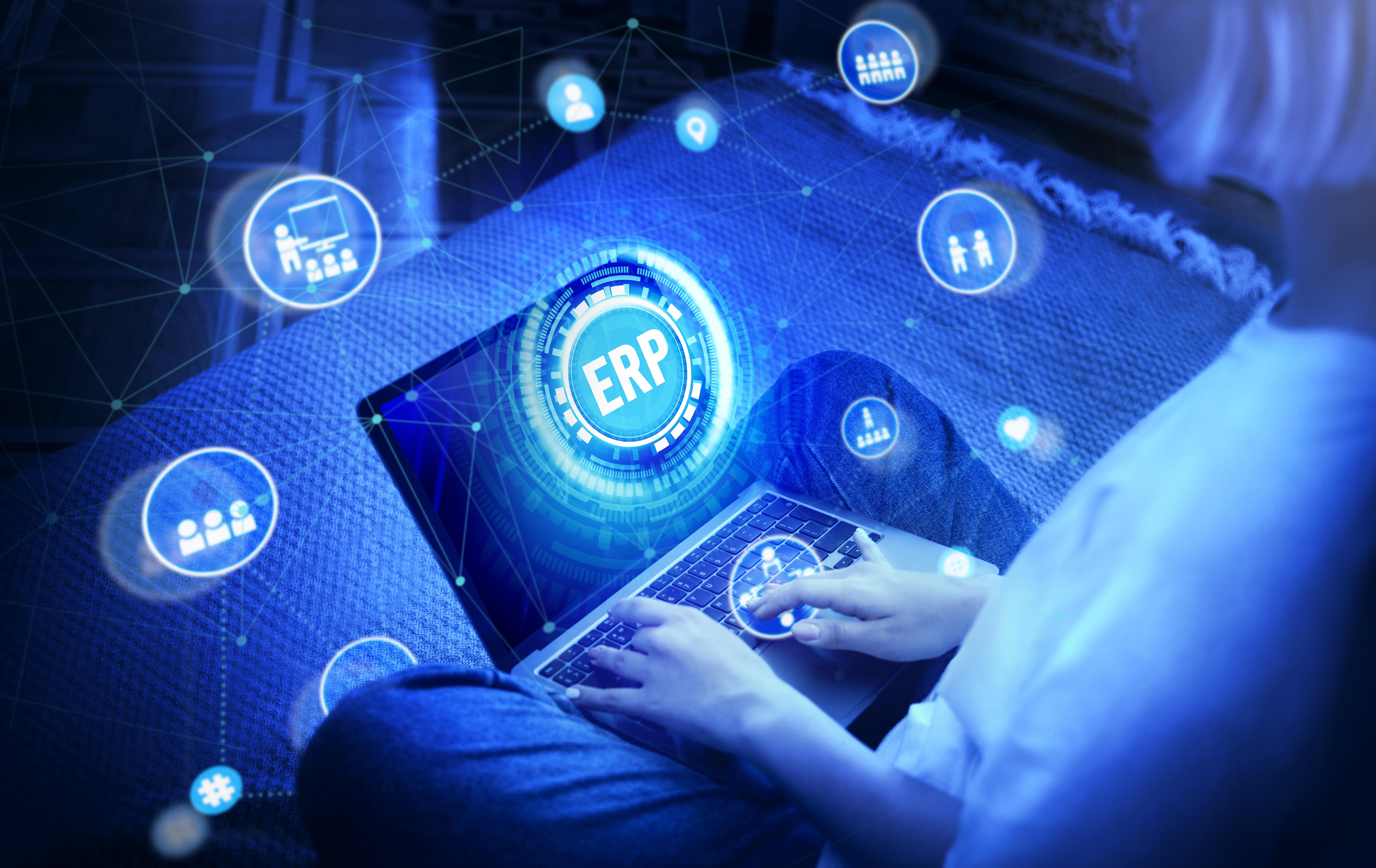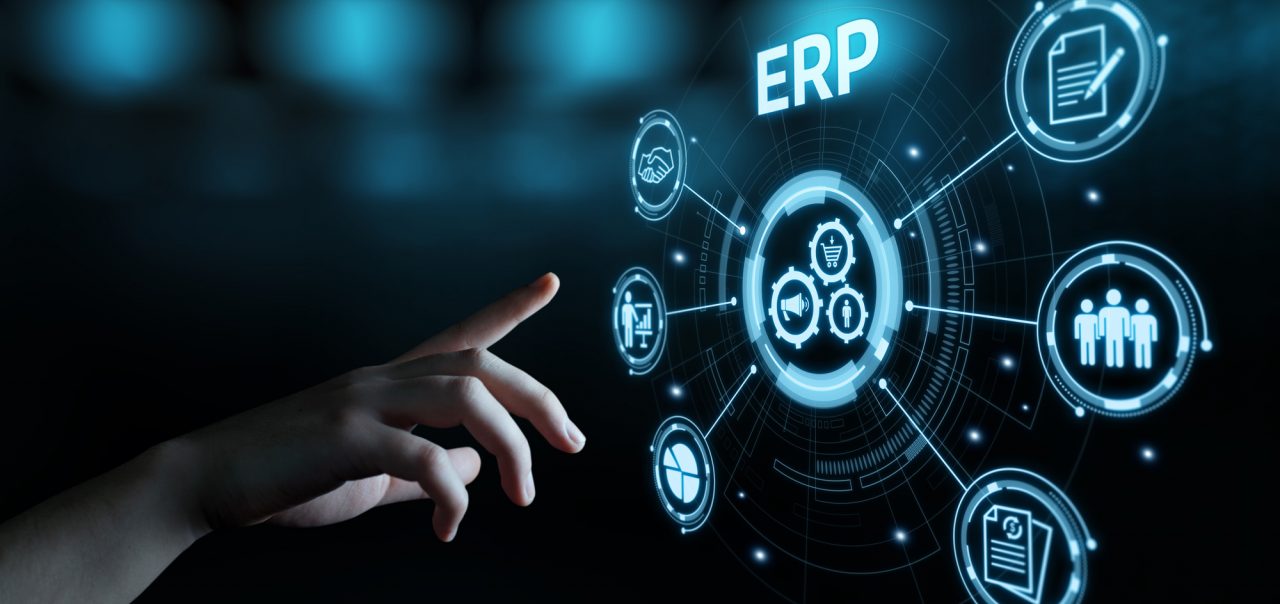Before the pandemic hit, the need and importance of ERP was ruling the business world and many enterprises were shifting to the ERP software rather than spending a lot of money on different softwares. But after the pandemic hit the world, the requirement and need of ERP in the business world has reached to a very high level. This shows that there will be many trends in ERP in the year 2022 which will help the businesses a lot. In this blog we will see the key trends of ERP that every business should know by the year 2022 arrives.
Two-Tier ERP
Companies tried to construct a single ERP system that basically solely handled their back-office tasks, which resulted in costly failures in the early days of ERP. On the ashes of these failed businesses, forward-thinking entrepreneurs constructed two-tier ERP software.
Companies that employ two-tier ERP software nowadays are either multinational conglomerates or major organizations with multiple subsidiaries. The dual implementation of ERP within a corporation is known as two-tier ERP. The "legacy application," which is used at the corporate level, is the first tier. The subsidiaries are in charge of Tier 2.
While connecting to the corporate office's tier-one system, subsidiaries can optimize their regional back office at the tier two level to best meet their needs (regional business models, language, etc.).
Not only is ERP becoming two-tiered, but new software packages are focusing on digital transformations, ERP's final mile, and other topics.
Rise in the 3D printing
Three-dimensional printing, commonly known as "3D printing," "additive manufacturing," or "AM," is revolutionizing the way complicated things like engines and seat buckles are manufactured. Printers enhance parts, reduce prices, and increase productivity, allowing large quantities of well-made products to be produced inexpensively and rapidly.
Plastic filament printing is a thing of the past. Instead, today's engineers can use three-dimensional printers to create rapid prototypes for metal components. This revolutionary technology has already been used by the automobile, consumer electronics, healthcare, and other industries. Hearing aids, turbine blades, coffee cups, candy, and human tissue are just a few examples of products manufactured with this revolutionary technology.
Due to fierce competition among aerospace and defense firms, any new, proven technology that might give them a significant competitive advantage must be adopted. Furthermore, the capacity to generate customized, specialized parts fast and easily makes 3D printing a must-have technology for any large, serious manufacturing organization.
Artificial Intelligence
The general public has long believed that computers will supplant people, resulting in widespread job loss. Many human duties, in fact, can now be completed totally by computers. Some automobiles, for example, are self-driving.
As clever as it is, artificial intelligence (AI) is a little different in that the goal of AI creators is for their computer technology to supplement rather than completely replace human activity.
Computers that replicate human cognitive processes like problem-solving and learning are referred to as AI, or "machine intelligence." AI had a difficult start, but in recent years, it has seen a resurgence thanks to greater computer power and theoretical knowledge, as well as vast volumes of data. As a result, AI has arrived at its nascent stage.
AI is now integrated into ERP systems, allowing individuals to make better judgments, work more efficiently, and avoid making as many errors. Artificial intelligence is used to solve some problems in operations research, software engineering, and computer science.
Need of ERP Mobile Application
These days, everyone is glued to their phones. Many individuals bring their computers and other mobile devices to restaurants, coffee shops, their homes, and back to work.
We live in an era where information is instantly available, and today's mobile workforce expects large-company software to have a mobile app. Apps provide executives and staff with real-time access to company data and consumer communications. To address this demand, ERP is becoming more mobile.
From a neighborhood coffee shop or a backyard patio table, the workforce may send push notifications, organize events, evaluate and approve time, sales orders, and expenses using ERP mobile apps.
Apps tailored to a single task, such as processing sales orders or managing customer relationships, are prevalent. Employees have access to real-time data from the warehouse to the customer's door.
Companies that adopt this technology will have an advantage over those that don't because they will be able to get more work done during the day. As a result, it is completed faster, and customers are pleased.
Cloud ERP
The concept of keeping data on the cloud isn't new. The ERP community's involvement is novel since, until recently, ERP customers were wary of storing their firm data in the cloud.
Many more businesses are storing enormous volumes of ERP data in the cloud since the obvious benefits have dispelled any qualms. As a result, by the beginning of 2022, the cloud computing market will have grown to $258 billion.
The number one reason for cloud ERP adoption is the ability to access a global company's ERP from anywhere in the world. Cloud ERP provides superior data protection, thus it is not as unsafe as many people believe. Cloud ERP is also less expensive and easier to maintain.
Cloud services now account for one-third of enterprise IT budgets. As a result, in 2022, cloud ERP is expected to continue to diversify and offer more customisation options and capabilities.
Internet of Things
"The internet of things," or "IoT." This technology refers to the ability of computers to communicate with other equipment and objects.
Sensors installed on industrial equipment, for example, can transmit real-time information on the machine's performance to the manufacturer's ERP software. The information is viewed and interpreted by the foreman or manager. He then schedules any necessary maintenance during non-payable hours when staff are not present.
When IoT and ERP are linked, there are far fewer unexpected faults and shutdowns. As a result, fewer human technicians are required, and people are rarely compensated for doing nothing while machines are being repaired.
This level of communication and efficiency may be achieved by connecting IoT devices to ERP in a variety of applications across the supply chain. Companies will be considerably more competitive if they have this level of visibility all the way up and down the supply chain.
Why you choose BenchStep ERP
BenchStep ERP is the All in one, Feature-rich, Cloud-Based ERP software that helps businesses manage all their business requirements from one tool. It is a One-Stop-Shop solution for all business needs providing simple, hassle-free, and user-friendly software. It is especially designed to deal with the complexities involved in managing the activities in an organization making it Automated, Easier and Faster.





